The reporting period covers the harvest of winter wheat in southwestern China, which was concluded by late April. Summer crops (including semi-late rice, late rice and maize) are still growing. In general, crop condition in the southwest region is below the average of the last five years.
According to the CropWatch agro-climatic indicators the accumulated precipitation during this period was 817 mm (-9%), which was lower than the average for the same period in the past 15 years. Temperature was 18.6℃ (+0.2℃), which was slightly higher than the average, and RADPAR was 4% higher. The potential biomass was 1% lower due to the lower precipitation. CALF was the same as the average of the same period in the past 5 years, reflecting the overall normal condition of arable land utilization in this reporting period.
According to the NDVI departure clustering map and the profiles, crop condition in the north and southwest (about 41.2% of the region's cropland) were slightly above average throughout the monitoring period, while most of the Sichuan basin was affected by extreme heat and low rainfall, and crop conditions were significantly below average. Crop conditions in parts of southern Sichuan and western Hunan (about 11.8% of the region's cropland) were below average for most of the monitoring period and only rebounded to slightly above average at the end of the monitoring period. BIOMSS shows below-average biomass in the Guizhou region which may be associated with a substantial decrease in precipitation in Guizhou (-23%). The VCIx for the whole region was 0.94, indicating that crop conditions in southwest China were generally normal.
Figure 4.16 Crop condition China Southwest region, April - July 2022
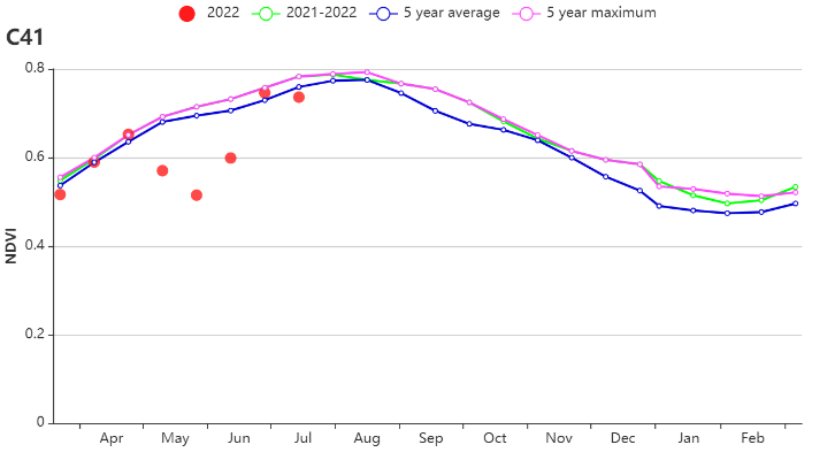
(a) Crop condition development graph based on NDVI
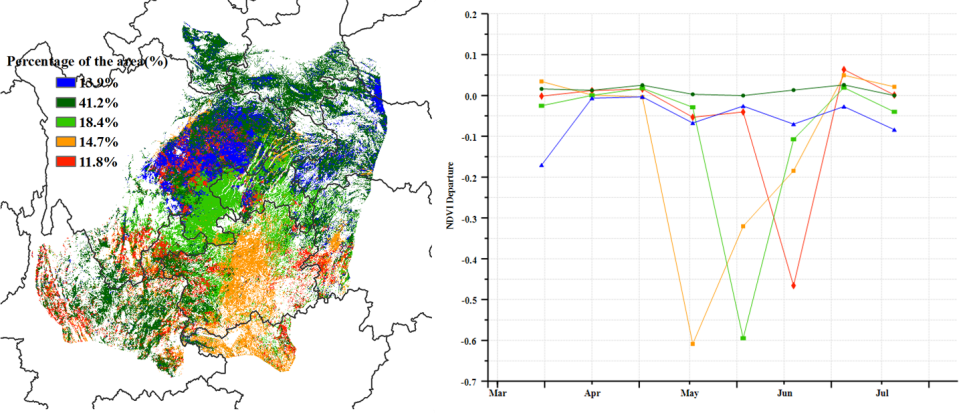
(b) Crop condition development graph based on NDVI (c) NDVI profiles
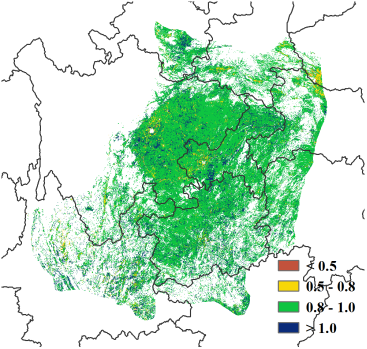
(d) Maximum VCI
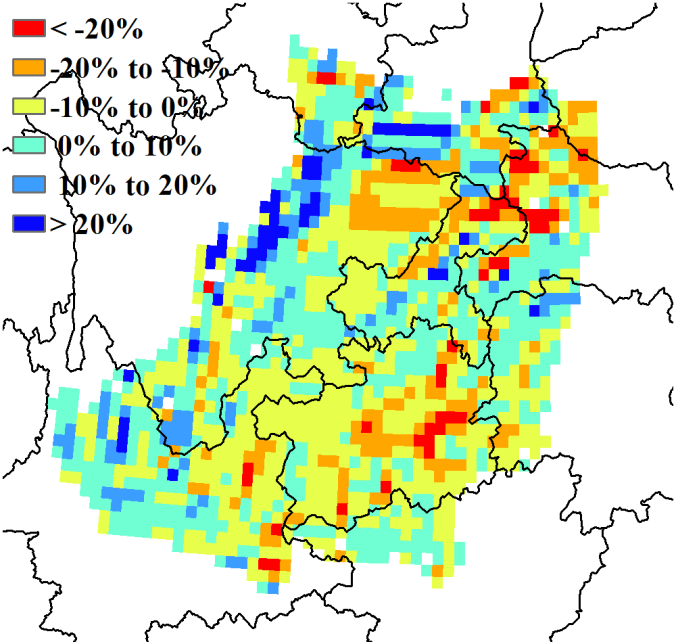
(e) Potential biomass departure from 15YA
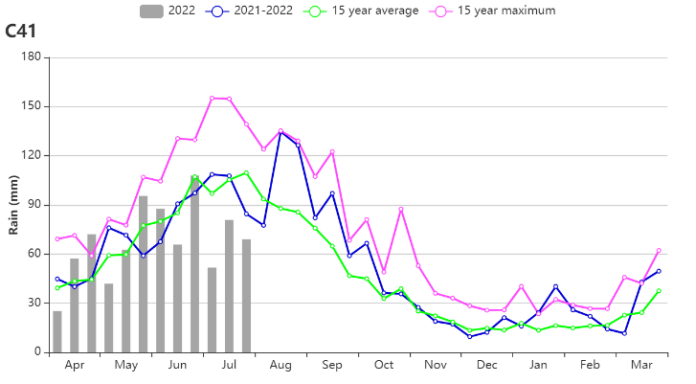
(f) Time series rainfall profile
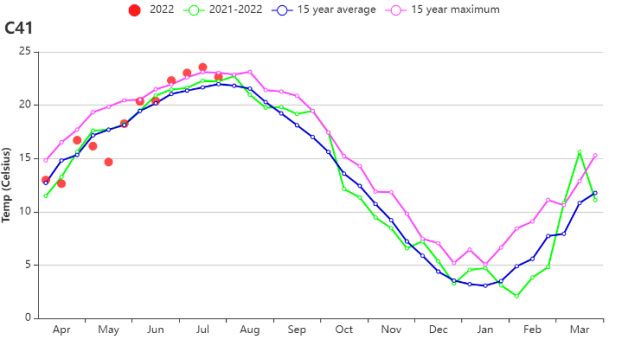
(g) Time series temperature profile
